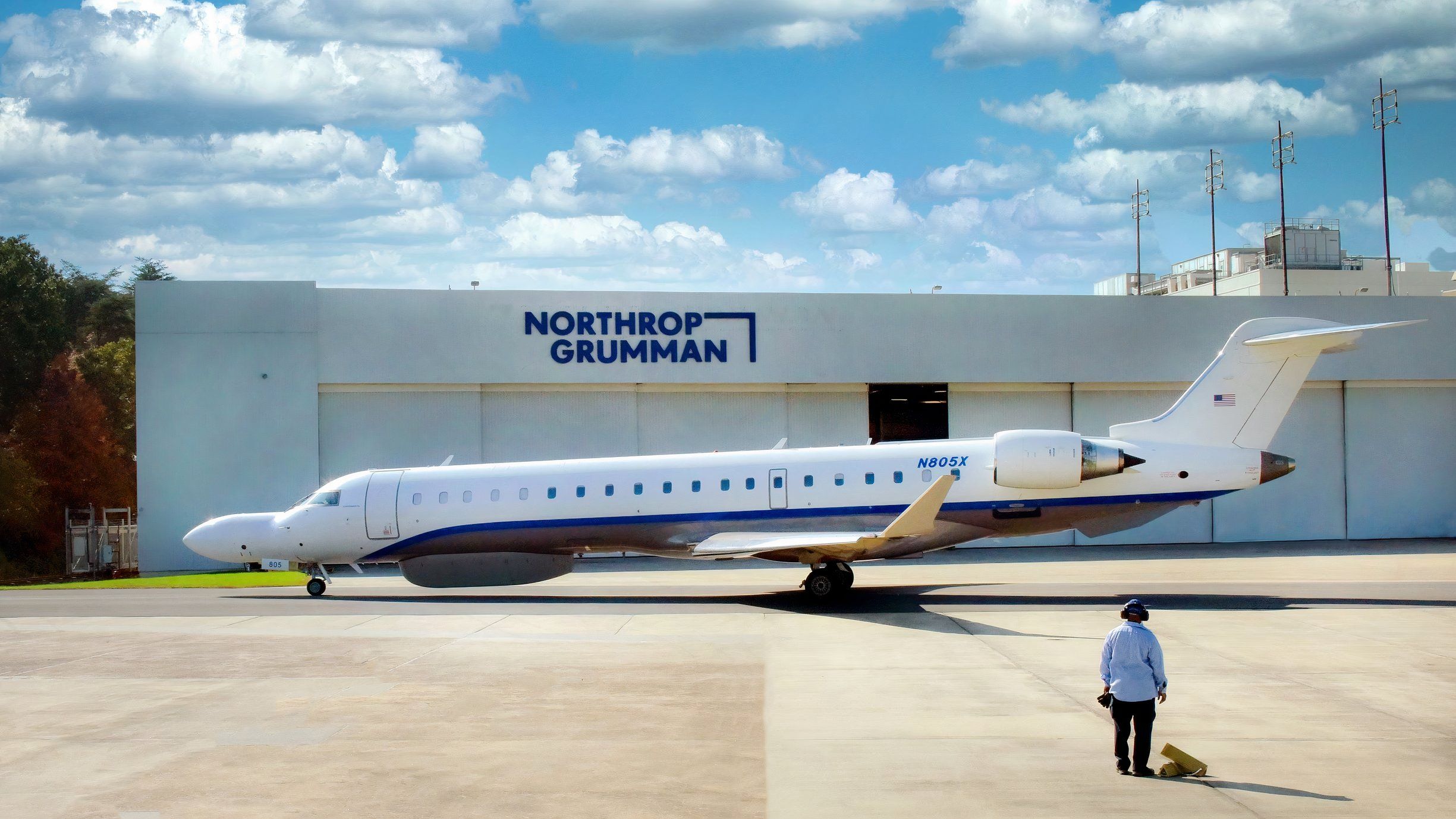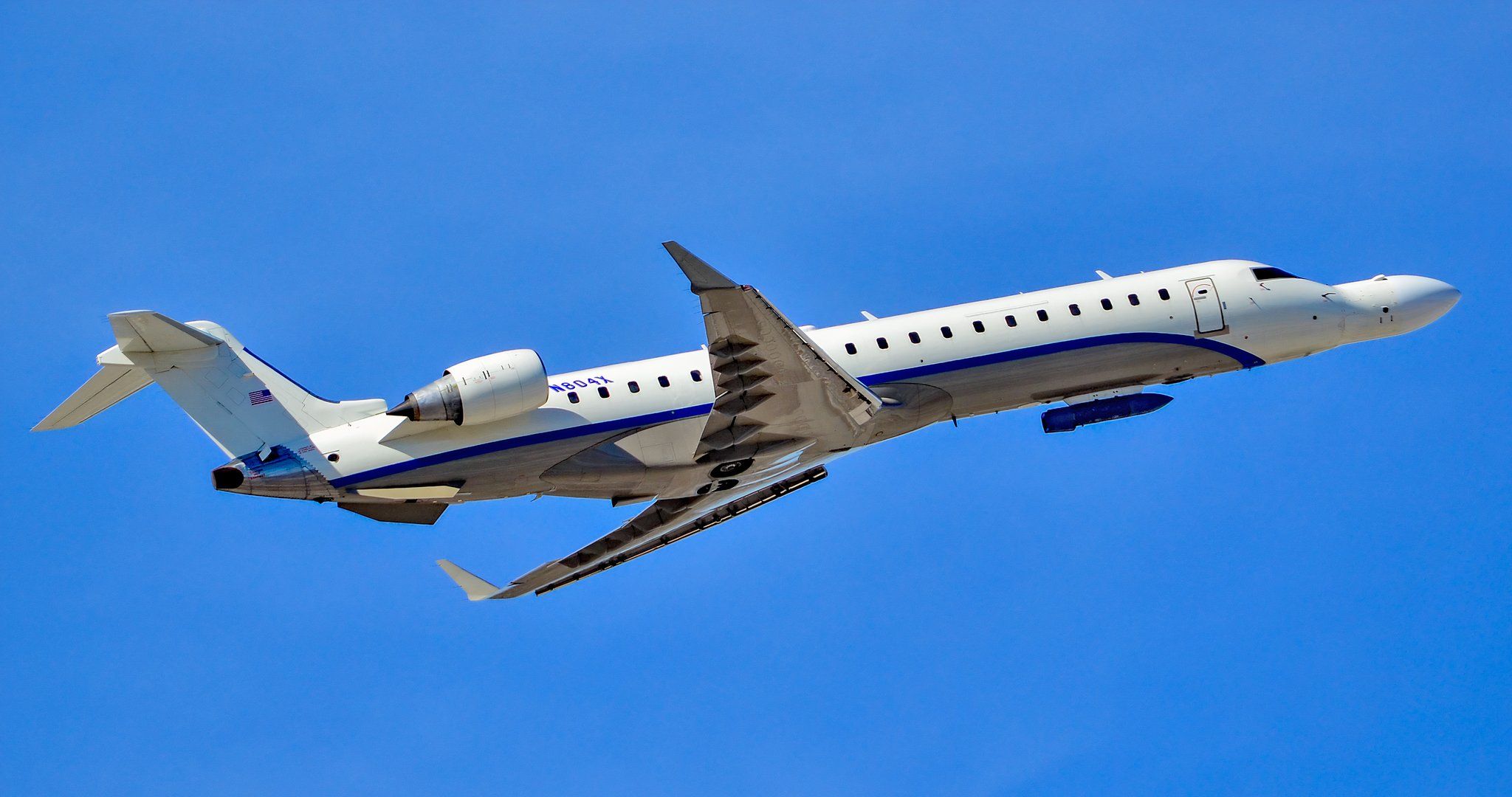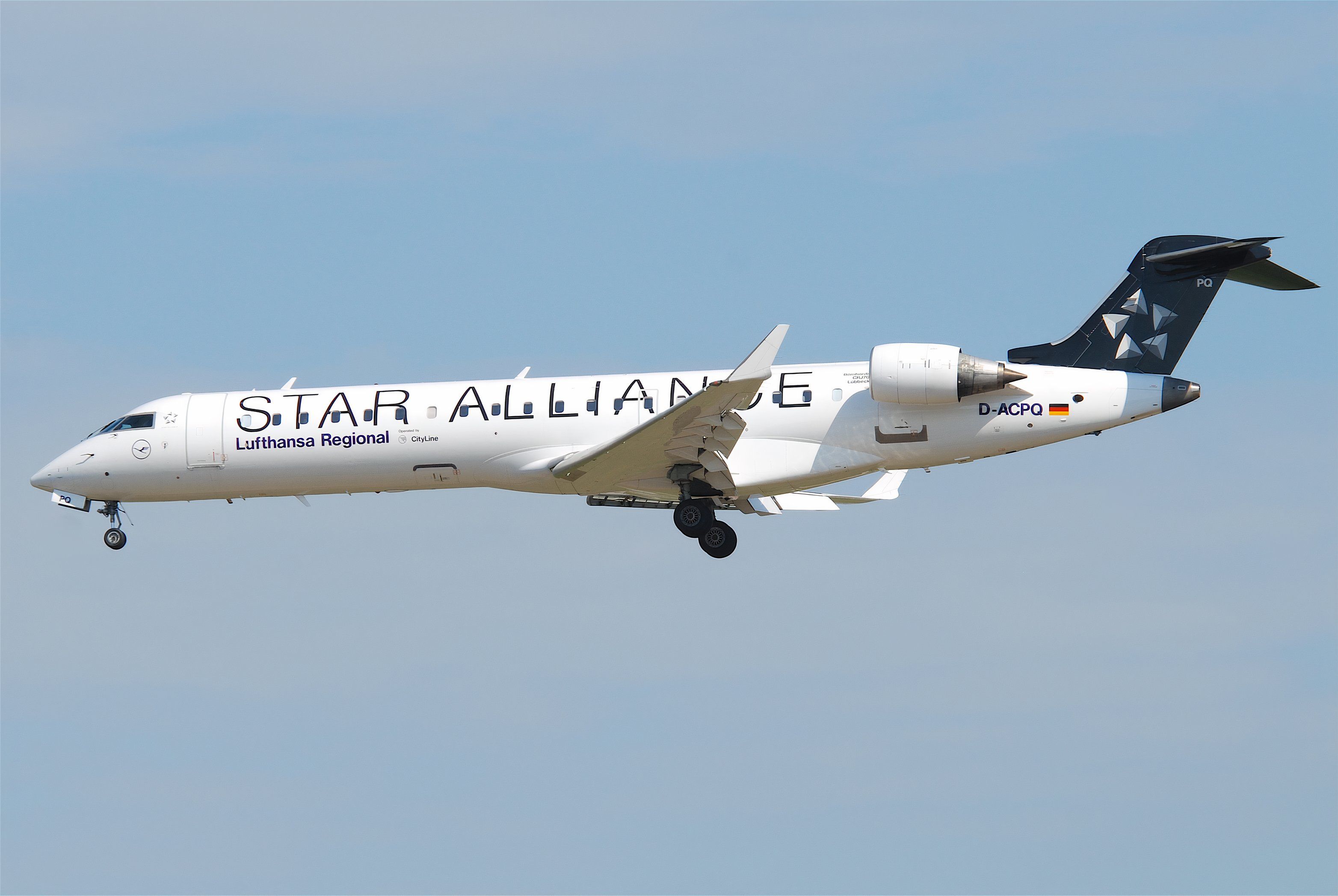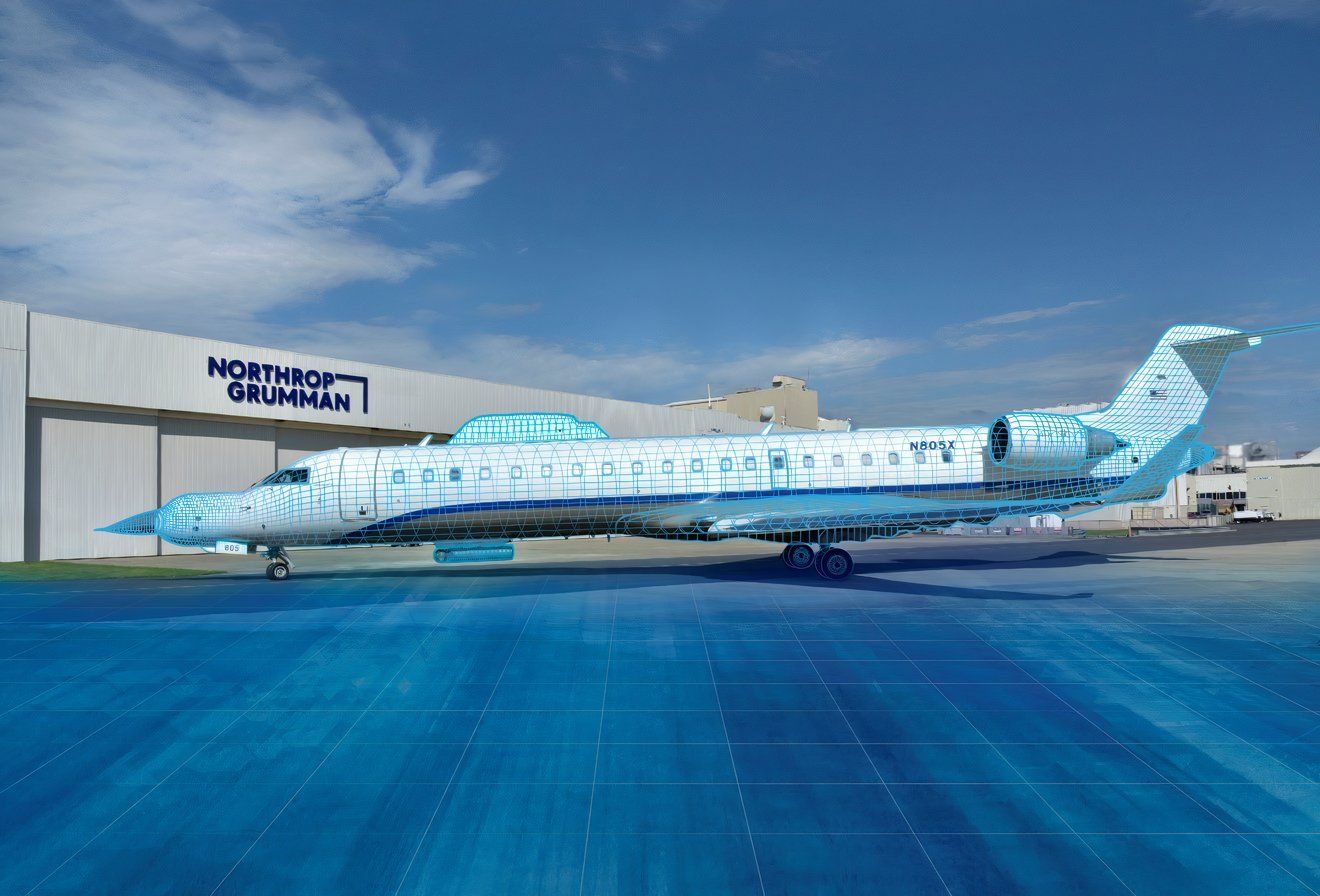Summary
- Northrop Grumman uses three different Bombardier CRJ700 aircraft to test fighter jet noses, radar systems, and avionics.
- The company operates three CRJ700 testbed aircraft, including N804X, N805X, and N806X.
- Northrop Grumman is developing a Digital Shadow testbed, a digital replica of the CRJ 700, to replace real flight tests, reducing cost and accelerating development.
The Bombardier CRJ series of regional jets can be found operating feeder flights all over the world. Bombardier produced early 2,000 of these aircraft between 1994 and 2020, including 330 CRJ700s. In an unlikely role change, this is also the type of aircraft that US aerospace and defense giant Northrop Grumman uses to test fighter jet noses. The company operates three of these aircraft, each testing a variety of avionics, radar, and structural updates for other aircraft.
A notable new nose
Even in their normal passenger-carrying configurations, aircraft from the Bombardier CRJ series have conspicuously pointy noses. In the case of test aircraft, this part of the aircraft tends to be even longer anyway, but Northrop Grumman has gone one better.
Specifically, as spotted by aeroTELEGRAPH, the West Virginia-based defense juggernaut has equipped a Bombardier CRJ700 in a way that allows it to test fighter jet noses. This increases the length of its pointy front end even further and makes for a striking sight.
The aircraft bears the registration N804X. According to data from ch-aviation, it is 25 years old, and first flew on June 17th, 1999. As it began its career as a testbed aircraft for Bombardier itself, this was also its delivery date. It stayed there until 2010 when, after a brief spell under the ownership of Learjet, it joined Northrop Grumman in February 2011.
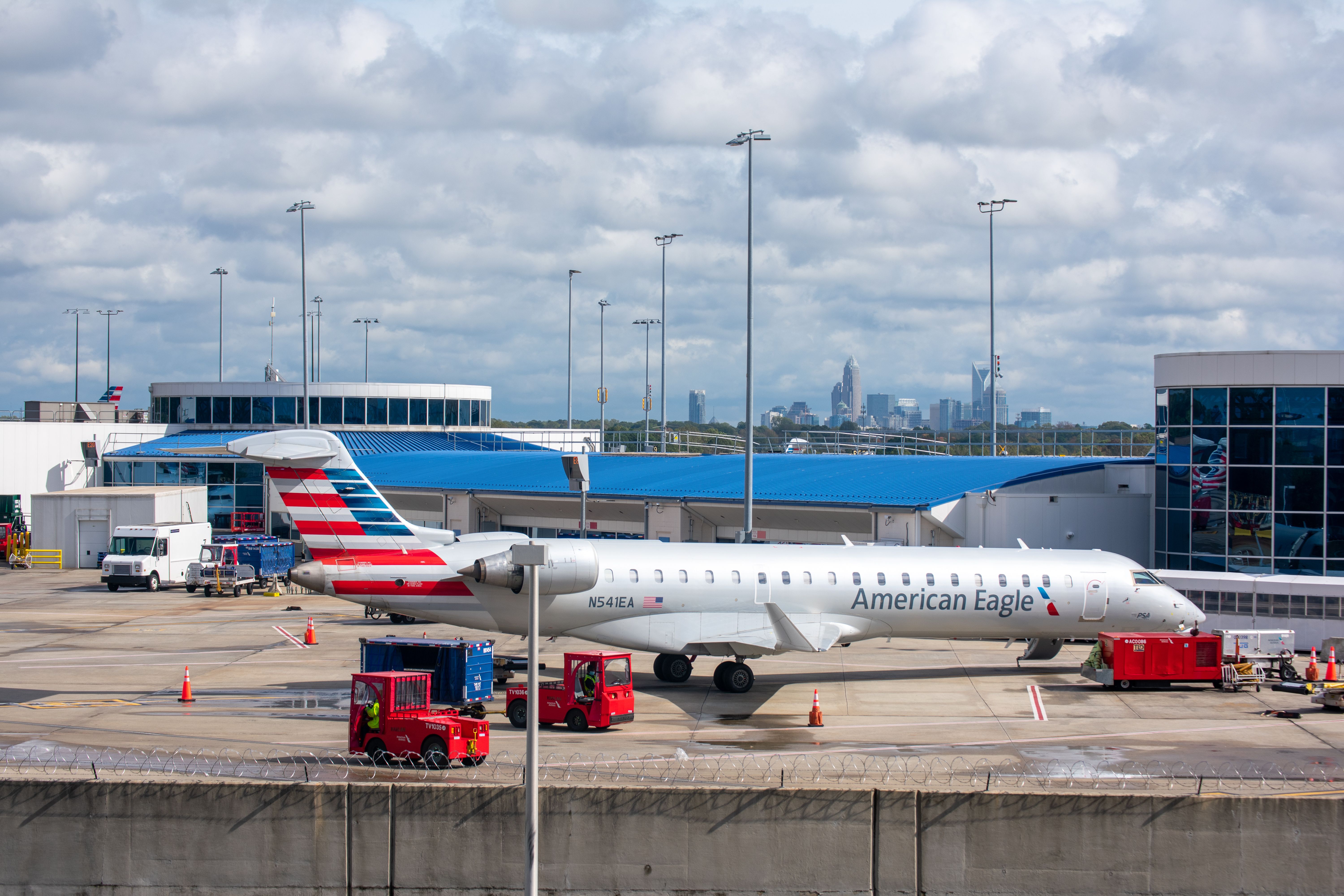
Related
The Bombardier CRJ700: A Brief History
The CRJ700 entered commercial service in 2001.
What is this plane used for?
The purpose of N804X’s lengthy nose is to test various systems that will later go on to be implemented on fighter aircraft. As seen in the tweet below, this typically results in its cylindrical nose taking on a more pointy form, as aspects like missile seekers are attached.
In November 2020, as reported by Interesting Engineering, Northrop Grumman used the aircraft to test an advanced warfare system for F-16 fighter jets. Known as the APG-83 Scalable Agile Beam Radar (SABR), this sensor allows pilots to identify targets with a greater level of precision. The company explained in a statement released at the time that:
“Northrop Grumman is a pioneer in developing multi-function sensors. Through our iterative development and flight demonstrations, we are focused on agile development with OMS-compliant sensors and commercial practices to prove the rapid integration of capabilities across mission sets. The result is faster and more affordable advances in sensor capabilities for U.S. forces and their allies.”
A three-aircraft CRJ700 fleet
This aircraft is one of three CRJ700s that Northrop Grumman operates. The company currently operates three CRJ700 aircraft – all as testbeds. These are:
- N804X, as discussed here. At 25 years old, this is the oldest of the three and has been with Northrop Grumman the longest (since 2011).
- N805X. The second of these CRJs is a 20.9-year-old example which, as seen in the photograph below, used to fly for Lufthansa CityLine. It did so from 2003 to 2015 before joining Northrop Grumman. Data here is according to ch-aviation. It likewise operates as a testbed for various avionics, and also structural elements.
- N806X. Northrop Grumman’s third and final testbed CRJ700 series aircraft is presently registered as N806X. This 23.3-year-old jet began its career at French regional carrier Brit Air in 2001. In 2013, this airline became known as ‘HOP!’, and the aircraft left France to join Adria in 2016. Since 2018, it has flown for Northrop Grumman.
Developing a digital twin for the CRJ
The next phase of life for these CRJ testbeds could be very different. In 2022, Northrop Grumman announced that it was developing a Digital Shadow testbed. This is essentially a digital replica of the real CRJ 700 testbed that will replace real flight tests. It could include digital representations of sensors and radars instead of lengthy airborne tests.
Photo: Northrop Grumman
This, of course, will be faster and cheaper than airborne testing, bringing not just cost but also accelerated development advantages. It will also allow digital testing beyond the limits of what real flight testing can achieve. Roshan Roeder, the vice president of airborne multifunction sensors at Northrop Grumman explained further:
“Our Digital Shadow testbed will enable the rapid iteration and assessment of various mission systems configurations and trades via digital models across the entire lifecycle. Extending the digital thread and developing a digital twin of our test aircraft allows us to rapidly collect valuable data of our mission systems all while reducing cost, schedule and risk.”
Did you know that Northrop Grumman uses the Bombardier CRJ700 to try out fighter jet noses? Have you ever seen one of these testbed aircraft yourself? Let us know your thoughts and experiences in the comments section below.

